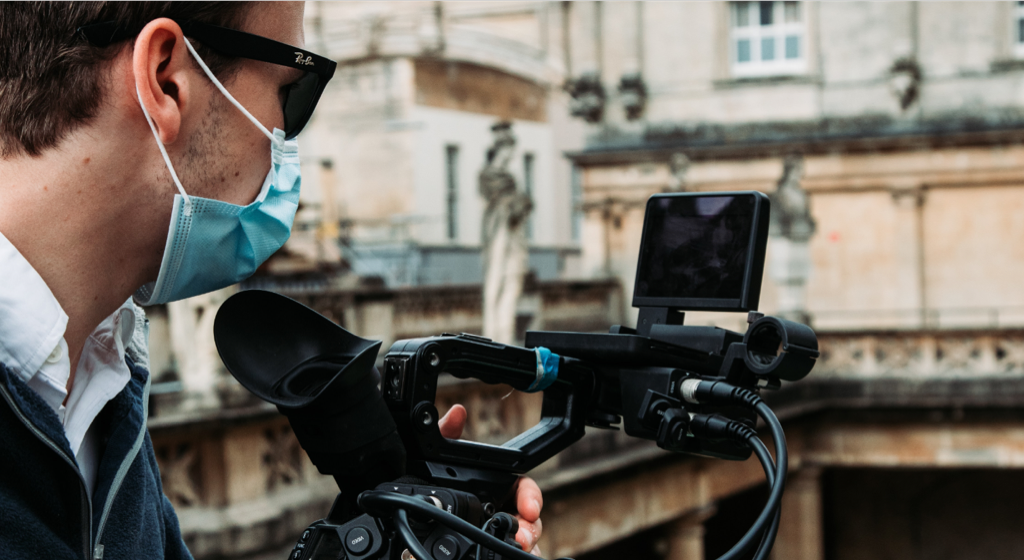
ΥΠΠΟΑ 01/06/2022
HELLENIC REPUBLIC
MINISTRY OF CULTURE & SPORTS
GENERAL SECRETARIAT FOR CONTEMPORARY CULTURE
POSTAL ADDRESS: Bouboulinas 20-22
POSTAL CODE: 106 82 ATHENS
TELEPHONE: 2131322528, -851
Email: [email protected]
SUBJECT: UPDATED GUIDELINES FOR SAFE FILM SHOOTS & SOUND RECORDINGS
Relevant documents:
[a] The section from the minutes of the 281st meeting (18.05.2022) of the National Public Health Protection Committee against the COVID-19 coronavirus.
[b] Joint Ministerial Decision no. Δ1α/ΓΠ.οικ.30819 (ΦΕΚ 2676/Β΄31.05.2022)
- This document is based on the guidelines and recommendations of the Hellenic Ministry of Health’s Covid-19 Expert Committee and provides guidance on how to conduct film shoots and sound recording sessions safely.
- This document replaces any previous document on this subject.
- Interested parties are requested to regularly visit the announcements page of the Hellenic Ministry of Culture and Sport, where they will be notified of any amendments to this directive.
All workers / performers who are not fully vaccinated or who are ill within the meaning of paragraphs 2 and 3 of article 9 respectively of the document below (Article 6[2]), who are physically present inside or outside the facilities / sites where the shoot/recording is taking place are obliged to conduct a diagnostic once (1 time) a week by means of the molecular method (PCR) or the COVID-19 rapid coronavirus antigen test (rapid test) in a private diagnostic laboratory, as defined in P.D. 84/2001 (Article 1[70]), or a private clinic or pharmacy or private doctor, at their own expense.
a. Filming / recording venues
- Indoor spaces must be kept well-ventilated. Only open-circuit air conditioners are permitted.
- Enclosed spaces must be disinfected using a 10:1 chlorine solution (meaning 9 parts water to one part chlorine) before and after every shoot/recording. The same holds for the toilets. For surfaces which are likely to be damaged by the use of bleach (sodium hypochlorite), a 70% ethanol solution can be used. Particular emphasis should be given to surfaces which are touched frequently, such as door knobs, on/off switches, handrails etc.
- Antiseptic alcohol solution (70%) must be on hand in all spaces used for film shoots, sound recordings etc.
- Hygiene rules must be applied in toilets, including:
- Good ventilation o Closing the toilet lid before flushing o The use of paper or plastic disposable seat covers is desirable o Running water and soap, paper towels and a foot-operated waste bin should be provided
- Where possible, equipment equipped with a photocell or foot switch (e.g. for the tap, soap dispenser) should be used
- Hand driers should not be used
- Use of a non-medical mask
- If the sinks have not been used in a long time, it is recommended that the hot water should be left to run for five minutes before the first use.
b. Conducting film shoots / sound recordings
- The use of non-medical protective masks is strongly advised during sound recordings as well as for all personnel involved in a film shoot, except for those participants appearing in each scene / performing on the recording
- The use of antiseptic alcoholic solution (70%) is recommended
- Special care should be taken with personnel who belong to vulnerable groups
- Personnel who manifest symptoms of illness must leave the venue immediately; under no circumstances should they fail to put on a mask before doing so.
- All equipment used should have been disinfected in the manner specified by the manufacturer prior to being placed in the venue
The above measures are indicative and cannot cover every possible situation; they must therefore be implemented in parallel with whatever broader measures are in force. For this reason, it is essential to visit the website of the Greek National Health Service at https://eody.gov.gr/ and https://covid19.gov.gr/regularly in order to stay up to date with the latest developments.
Everyone involved should demonstrate the requisite individual responsibility, thereby protecting both themselves and other people. Production companies in particular should take care to protect workers and to implement additional measures stemming from the particular features of a given space or shoot/recording session, at their discretion.
The General Secretary for Contemporary Culture
Eleni Doundoulaki
Unofficial Translation by GREEK FILM CENTRE, Hellenic Film Commission
